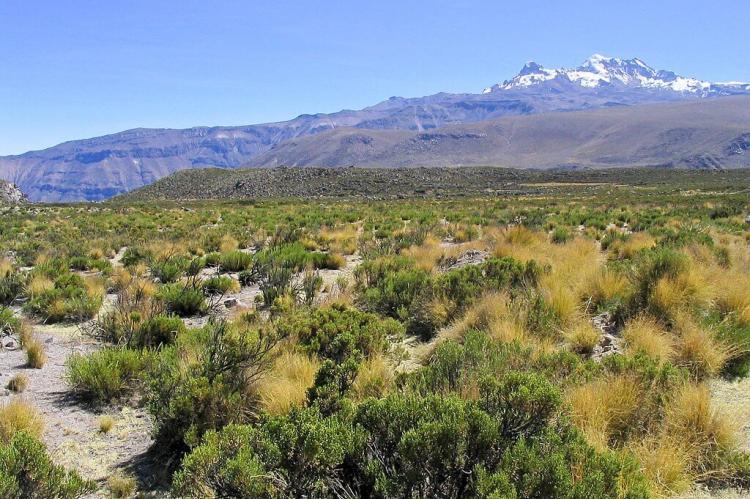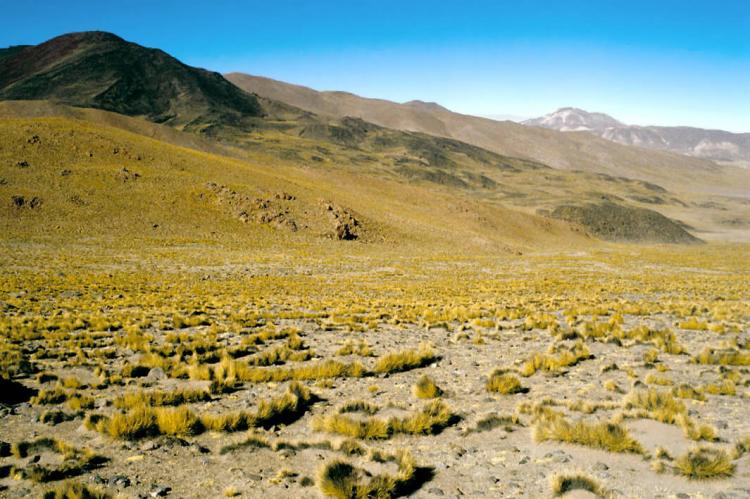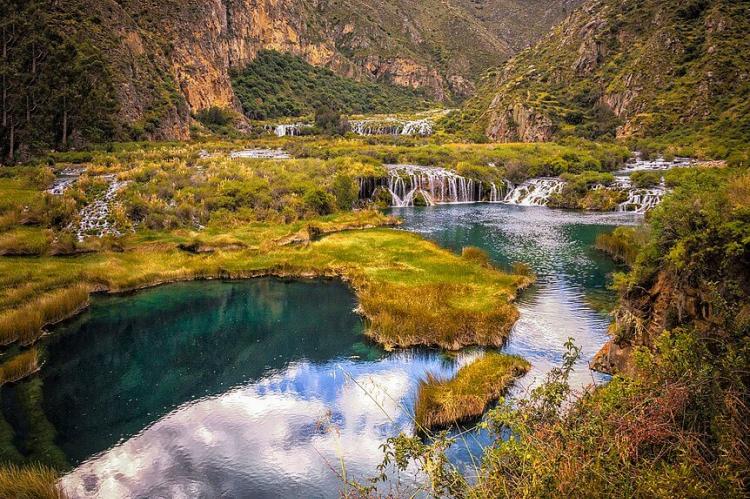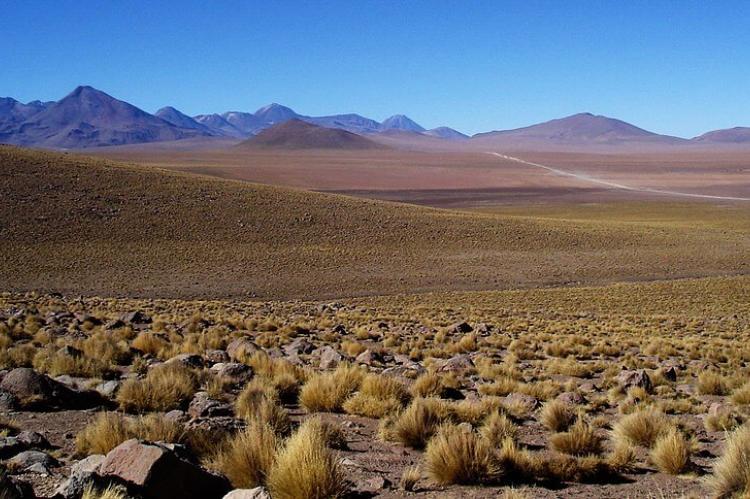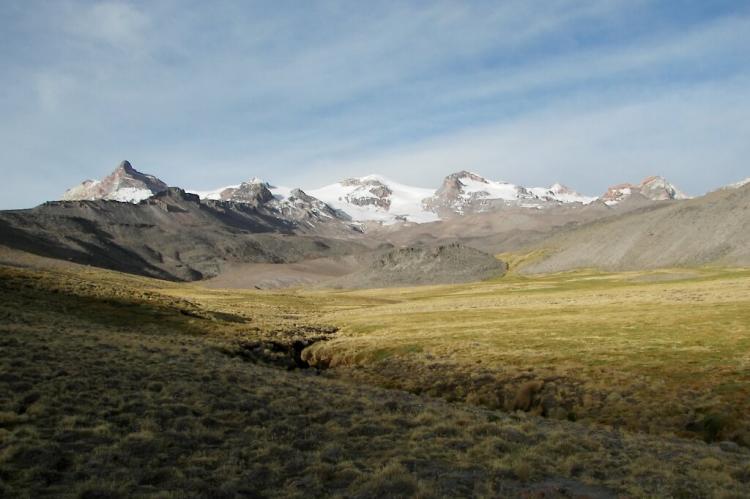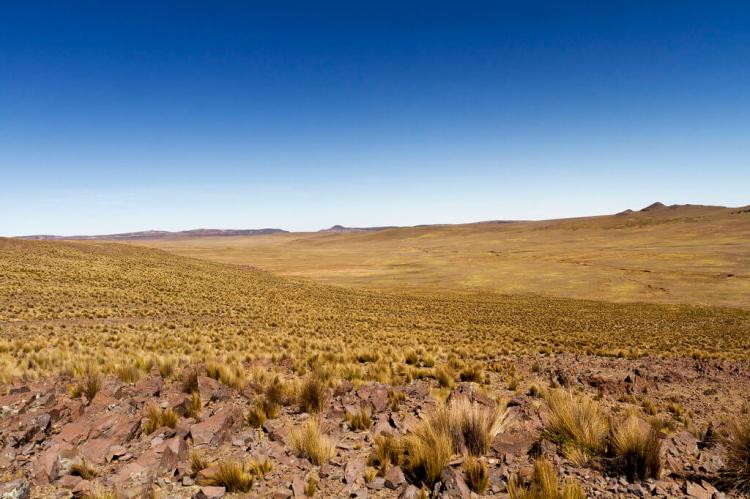The Puna: Whispers of Wind Across the Roof of the Andes
The Puna is an ecologically significant high-elevation grassland region that spans the Central Andes from northern Peru through western Bolivia to northern Chile and Argentina. This treeless expanse features wetlands and salt flats, showcasing nature's resilience at extreme altitudes.
Windswept Plateaus: Unveiling the Secrets of the Central Andean Puna
The Puna, a starkly beautiful and ecologically significant high-elevation grassland region, stretches across the vast expanse of the Central Andes, a realm where life has tenaciously adapted to thin air, relentless sun, and biting cold. Nestled within the montane grasslands and shrublands biome, this unique landscape, as defined by the World Wildlife Fund (WWF), extends from northern Peru through western Bolivia into northern Chile and Argentina. Characterized by its treeless grasslands, expansive wetlands, and shimmering salt flats, the Puna exemplifies nature's resilience at extreme altitudes, harboring exceptional biodiversity and playing a vital role in the hydrological balance of the Central Andean landscape.
A Realm Above the Trees: Geographical Embrace and Climatic Rigors
Much of the Puna lies within the rain shadow of the eastern cordillera of the Bolivian Andes, predominantly blanketing the Altiplano, a high-altitude plateau of immense proportions. This extensive grassland region is typically situated at elevations ranging from 3,000 to 5,000 meters (approximately 9,850 to 16,400 feet) above sea level, a zone that lies definitively above the natural treeline and generally below the permanent snow line of the towering Andean peaks. The intricate interplay of topographic variations and localized climatic conditions across this expansive high plateau gives rise to distinct regional plant vegetation types, creating a rich and fascinating ecological mosaic where life has carved a niche in the face of environmental adversity. The thin atmosphere results in intense solar radiation during the day and rapid temperature drops at night, further shaping the unique adaptations of the Puna's inhabitants.
A Tapestry of Vegetation: Unveiling the Puna's Sub-Ecoregions
The WWF has identified three distinct Puna sub-ecoregions, each characterized by a unique composition of plant life. These subregions reflect subtle variations in moisture availability and other environmental factors across this vast high-altitude domain.
The Central Andean Wet Puna, found in parts of Bolivia and Peru, often presents a landscape dominated by a mix of hardy grasses interspersed with a variety of herbs, lichens clinging to exposed rocks, resilient mosses thriving in damp areas, and even scattered ferns finding refuge in sheltered microhabitats. Notably, many areas within this wetter sub-ecoregion have been modified by human agricultural practices over centuries. This zone extends from north-central Peru, bordering the high-altitude páramos, southeastward along the eastern Altiplano of Bolivia, representing a transition in vegetation types influenced by slightly higher precipitation levels.
In contrast, the Central Andean Puna, which covers much of southern Peru and extends into Bolivia, is characterized by a greater prevalence of shrublands and thickets, often dominated by the tough and resinous tola shrubs (Parastrephia spp.). These shrubs, adapted to drier conditions and strong winds, form a significant component of the vegetation structure in this sub-ecoregion and provide shelter for some of the Puna's unique fauna.
Finally, the Central Andean Dry Puna, primarily found in the southern reaches of the Central Andes along the Cordillera Occidental in Bolivia and extending into northwest Argentina and northern Chile, exhibits a vegetation community adapted to even more arid conditions. Plant life is often sparser here, with drought-resistant shrubs, hardy grasses, and specialized cushion plants dominating the landscape. This reflects the challenges of survival in this dry, high-altitude environment.
Each of these distinct sub-ecoregions contributes to the Puna's overall biodiversity and ecological dynamics, showcasing the remarkable adaptability of plant life to the diverse and often extreme environmental conditions that prevail across this high-altitude expanse.
Life in Thin Air: The Resilient Fauna of the Puna
The mammals of the Puna region have undergone remarkable evolutionary adaptations to thrive in an environment characterized by low oxygen levels, prolonged periods of drought, and consistently cold temperatures. Iconic native camelids, including the graceful vicuña (Vicugna vicugna) and the larger guanaco (Lama guanicoe), roam these high-altitude pastures, their physiology uniquely suited to the thin air. Other notable mammals that have found success in these challenging altitudes include various species of viscacha (Lagidium spp.), agile relatives of the chinchilla that inhabit rocky outcrops; the short-tailed chinchilla (Chinchilla brevicaudata), sadly now critically endangered due to historical overhunting for its luxurious fur; and the Andean hairy armadillo (Chaetophractus nationi), a burrowing insectivore adapted to the cold and arid conditions.
Predators have also carved their niche in this high-altitude ecosystem. The Culpeo or Andean fox (Lycalopex culpaeus) is a common sight, preying on smaller mammals and birds. The small and exceptionally rare Andean cat (Leopardus jacobita), one of the world's most elusive felines, also stalks the rocky slopes in search of prey. The powerful puma (Puma concolor) is another apex predator that roams the Puna's vast landscapes, contributing to the delicate balance of this high-altitude food web.
Wings Above the Heights: The Avian Wonders of the Puna
The Puna is also home to a diverse and fascinating avian population, with numerous species exhibiting remarkable adaptations to the region's specific environmental conditions. The flightless Darwin's or Lesser Rhea (Rhea pennata) strides across the grasslands, a large, ground-dwelling bird showcasing the unique evolutionary pathways of avian life in high-elevation environments. The Puna tinamou (Tinamotis pentlandii), a ground bird known for its reluctance to fly, is a common inhabitant, well-camouflaged and adapted to the open terrain.
The briny lakes found within the Puna's salt pans attract a spectacular array of flamingos, adding a vibrant splash of color to the otherwise often stark landscape. The rare and endangered James's Flamingo (Phoenicopterus jamesi), the elegant Andean Flamingo (Phoenicopterus andinus), and the more widespread Chilean Flamingo (Phoenicopterus chilensis) find crucial breeding and feeding grounds in these high-altitude, mineral-rich waters, highlighting the importance of these seemingly barren environments for specialized wildlife.
A Fragile Realm: Challenges and the Imperative of Conservation
While showcasing extraordinary biodiversity and unique adaptations, the Puna faces increasing threats from a variety of human-induced pressures. Climate change is a significant concern, with altered precipitation patterns and rising temperatures potentially impacting the delicate balance of the ecosystem, affecting water availability and the distribution of plant and animal species. Habitat loss, driven by activities such as mining, livestock overgrazing, and agricultural expansion in some areas, further threatens the Puna's native flora and fauna. Human-wildlife conflict, particularly between livestock herders and predators like pumas and Andean foxes, also presents conservation challenges.
Recognizing the ecological significance and fragility of the Puna, conservation efforts are becoming increasingly crucial. Sustainable land management practices, promoting responsible grazing and mining activities, are essential to minimize human impact. A holistic approach to preserving the Puna's unique flora and fauna, involving local communities and incorporating traditional knowledge, is vital for long-term success. Understanding the intricate relationships within this high-altitude ecosystem and addressing the impacts of climate change are paramount to ensuring the continued survival of this remarkable and often overlooked high-elevation grassland region for future generations.
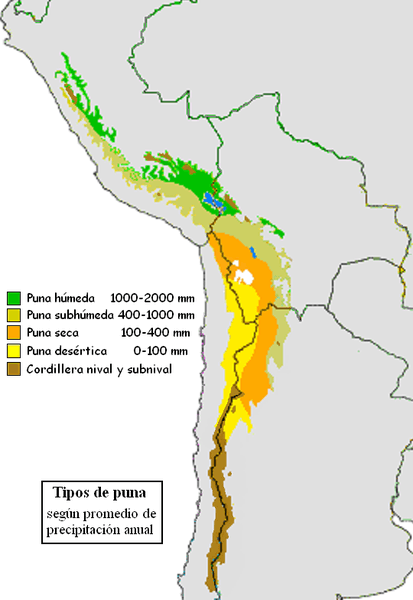
Map depicting the Puna region in the Andes.
